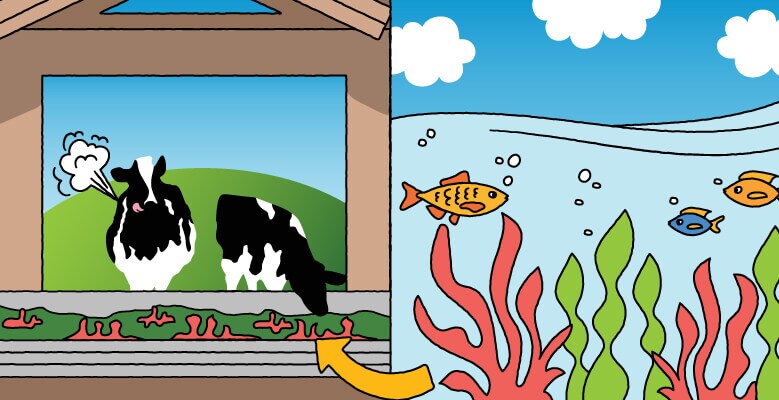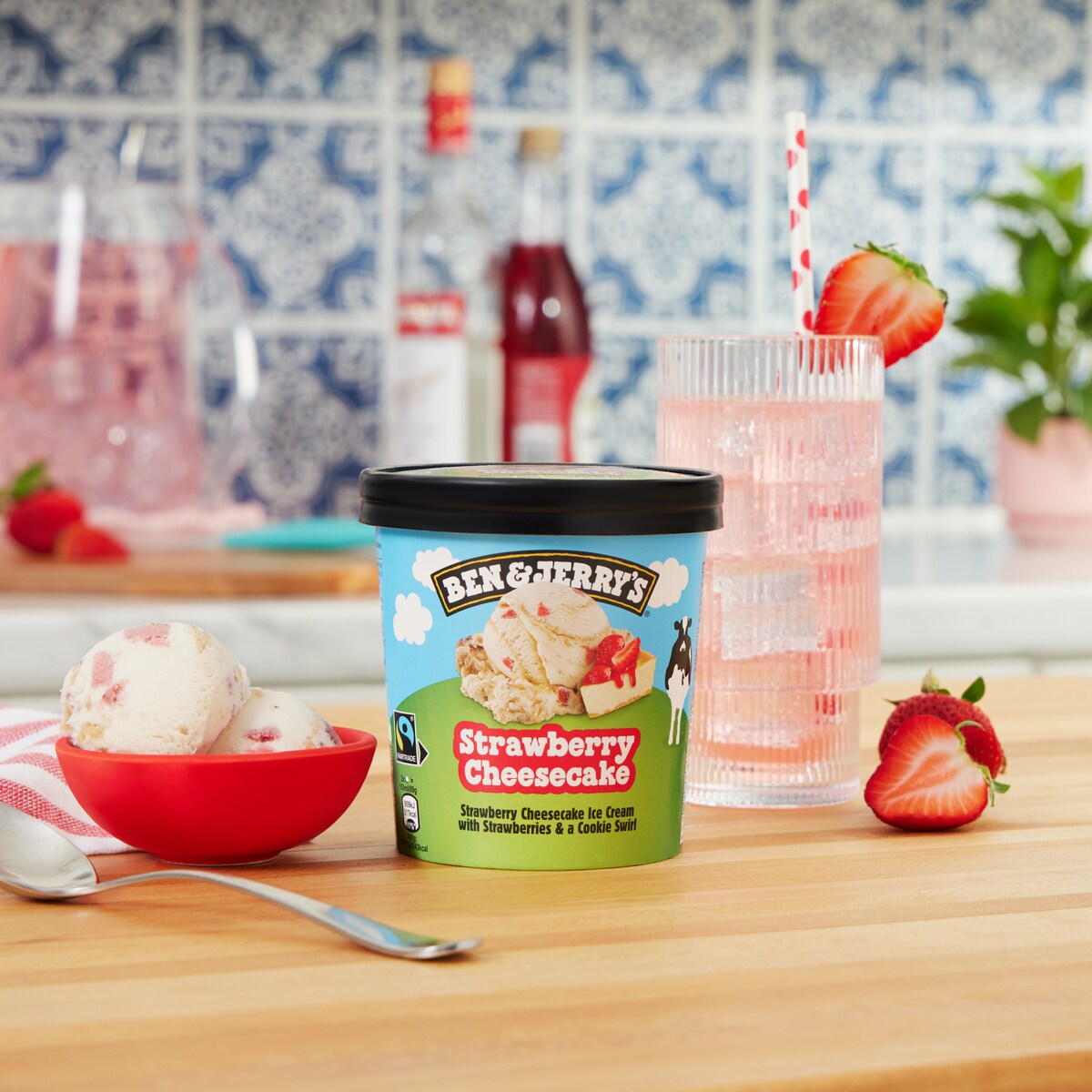
We are an ice cream company, but we know that dairy products have a big impact on the planet—which is why we’re working hard to ensure the flavors we make do as little harm as possible to the planet we love. This is the second installment in a three-part content series highlighting some of the exciting things we’re doing to reduce our greenhouse gas emissions and fight climate change.
Like we mentioned in our piece on manure digesters, dairy ingredients account for more than 50% of our total greenhouse gas emissions, so it’s the best place for us to start reducing our carbon footprint. Of course, there’s no dairy without cows, and cows… well, cows can be (if you’ll pardon the unscientific terminology) gassy.
Let’s be real: Cows belch and cows fart—often, and a LOT—and every time they do, they release methane into the air, and methane is a huge contributor to climate change. But we’re working hard to reduce these so-called enteric emissions! Here’s how.
What Goes In Must Come Out
Just like with us humans, cows are what they eat, and what cows eat can affect the level of methane emissions that they, uh, release into the atmosphere. (Just so we’re absolutely clear on the science, cows belch far more often than they fart. Now you know.)
The good news is that scientists are looking into innovative feed additives and are studying forage (aka grasses and legumes, hay, and silage) variety and quality to reduce this negative impact on the environment.
But before we get into that, we should talk about cow digestion. All ruminants (like cattle, sheep, deer, and goats) have a four-chambered stomach. The rumen is the largest compartment and can hold up to 25 gallons of food! Microbes in the rumen work to break down that food, and this fermentation produces carbon dioxide and methane. Digestion can produce up to 50 quarts of gasses an hour in the rumen, and a cow releases most of that gas by belching.
Reducing Methane Emissions
Researchers in recent years have been focusing on developing feed additives that can inhibit the microorganisms located in the rumen. Bottom line: If you reduce the gas produced in the rumen, then you can reduce the gas expelled by the cow.
These additives, it turns out, are something of a win-win: Their use can reduce methane, which is the main goal, but since all that belching of methane represents lost energy, cows that are given additives actually need less food to create the same amount of milk, further reducing climate impact.
Believe it or not, studies have suggested that mixing just 3 ounces of seaweed into their feed results in cows belching 82% less methane into the atmosphere! Other feed additives have been shown to provide a lesser, but still substantial, reduction of methane.
What We’re Doing for Our Cows
These results are remarkable, and are likely just the tip of the iceberg—a melting iceberg, if the world can’t get greenhouse gas emissions under control—when it comes to innovations related to cattle forage and feed.
In partnership with scientists and researchers, we’ve been working to apply these and other solutions to our own dairy cows. Here are some examples of what we’ve been up to:
- Sponsoring 2021 enteric research in the US with Dr. Elizabeth Latham of Bezoar Laboratories around a feed additive trial that is taking place at the Fairchild Dairy Teaching and Research Center
- Working with the University of Vermont in the US on forage species and feed quality research
- Coordinating with our dairy co-ops to share information on our research priorities and results
- Continuing to evaluate breakthrough methane mitigation technologies
In 2022, at a Vermont dairy farm, we’ll demonstrate the use and potential of a red seaweed additive produced by a leading innovator in the field. It's our hope to take what we learn from that demonstration project, as well as from all our research efforts, and scale up best practices across all of our farms in the coming years. Our goal is to update this content annually with results of our research.
Guided by Our Values
In the US, agriculture is responsible for 10% of all greenhouse gas emissions—and half of that comes from ruminants. We love ice cream, but we have to ensure that we can produce, and enjoy, it responsibly. Right now, all of us, especially businesses, have to do our part to take action and drastically reduce emissions before it’s too late and the climate crisis makes our world uninhabitable.
We definitely don’t have all the answers, but that’s why we partner with experts to make sure that we minimize our impact on the planet. The fact that a relatively simple change like adding some seaweed to a cow’s diet could produce such a massive reduction in methane gives us a lot of hope.
Next time, we’ll dig into more ways that Ben & Jerry’s is combating the climate crisis. Join us then.
Sweeten Up Your Inbox!
Subscribe now and we'll make sure you get the inside scoop on Ben & Jerry's fun and flavours! It's like dessert for your inbox, and you're going to want seconds.

